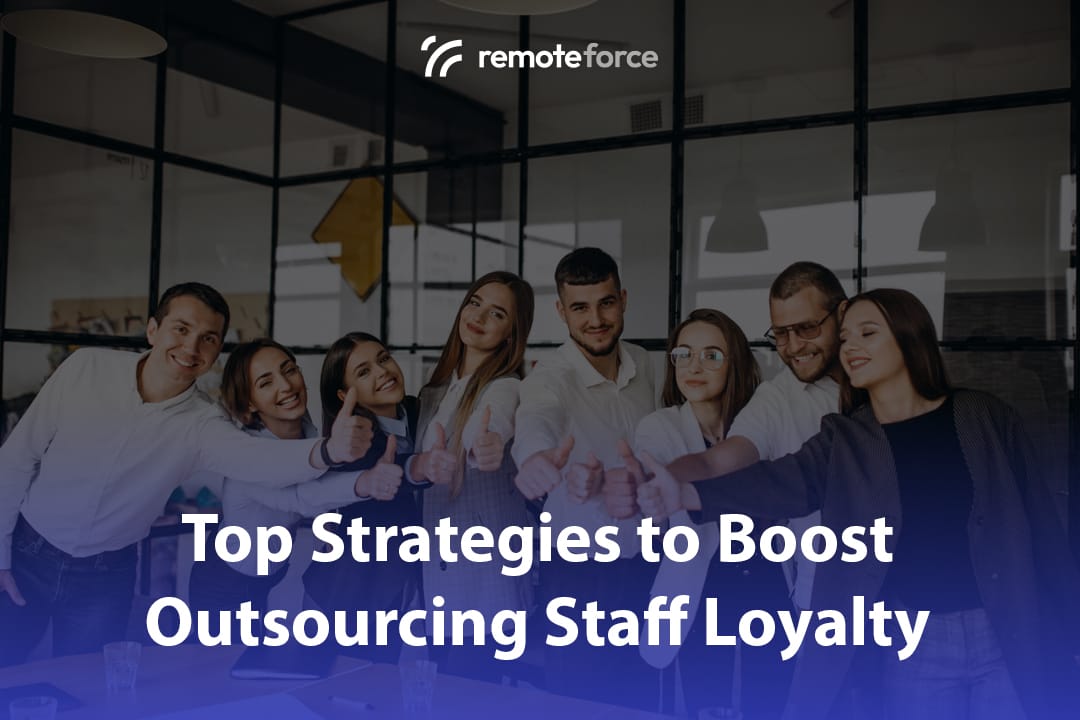Many businesses view outsourcing as a purely transactional relationship: they pay for a service, and the vendor delivers. This short-sighted view, however, ignores the most critical element of a successful long-term partnership: the people. High turnover within your outsourced team—whether they are digital marketers, web developers, or legal administrators—can silently sabotage your projects, drain institutional knowledge, and increase hidden costs.
Building loyalty and retaining top talent within your outsourced workforce isn’t just the vendor’s job; it’s a shared responsibility. Implementing smart retention strategies is a strategic investment that pays dividends in stability, quality, and innovation.
Table of Contents
ToggleThe Hidden Costs of Low Retention in Outsourcing
Before diving into solutions, it’s crucial to understand why a “revolving door” of outsourced staff is so damaging to your business.
| Impact Area | Description of Hidden Cost |
|---|---|
| Knowledge Drain | Every time an employee leaves, they take valuable, project-specific knowledge with them. This includes familiarity with your brand, internal processes, and past project challenges. |
| Productivity Loss | The new employee requires a ramp-up period to learn the ropes. During this time, productivity drops, and project timelines can be delayed. |
| Onboarding & Training Burden | Your internal team must repeatedly invest time in training new outsourced staff, diverting them from their core responsibilities. |
| Inconsistent Quality | Constant changeover leads to inconsistent work quality, affecting everything from customer service standards to coding consistency. |
| Decreased Morale | High turnover can signal instability, impacting the morale of both the remaining outsourced team members and your in-house staff who work with them. |
The Vendor’s Responsibility: Building the Foundation of Loyalty
A reputable outsourcing provider like RemoteForce understands that retention starts at home. The vendor is responsible for the foundational elements that make a job attractive and secure.
1. Competitive Compensation and Benefits
This is the baseline. The vendor must provide fair, market-rate salaries, comprehensive health benefits, paid time off, and all legally mandated social security contributions. A professional who feels undervalued financially will always be looking for the next opportunity.
2. Professional Development and Career Pathing
Top talent wants to grow. A leading outsourcing firm invests in its people by offering:
- Training and Certifications: Sponsoring courses for a digital marketer to get the latest Google Ads certification or for a developer to learn a new framework.
- Clear Career Paths: Showing employees that there are opportunities for advancement within the outsourcing company, preventing stagnation.
3. A Strong and Supportive Company Culture
Even though employees work on client projects, their primary employer is the vendor. A positive internal culture with strong management support, team-building activities, and open communication channels makes employees feel valued and part of a community.
4. Recognition and Appreciation
The vendor should have formal systems in place to recognize outstanding performance. This can include performance bonuses, “employee of the month” awards, and public acknowledgment of achievements.
The Client’s Role: Creating an Environment for Loyalty
While the vendor handles HR and payroll, the client controls the employee’s daily work experience. This is where you, as the client, can make the biggest impact on retention and loyalty.
1. Integrate, Don’t Isolate
Treat your outsourced team members as a true extension of your in-house team.
- Include them in relevant meetings: Invite them to team stand-ups, project kick-offs, and brainstorming sessions.
- Give them access to communication channels: Add them to the relevant Slack or Teams channels so they feel part of the daily conversation.
- Introduce them to the company: Share your company’s mission and vision. Help them understand their role in the bigger picture.
2. Provide Clear, Respectful Communication
Effective communication is vital for remote and outsourced teams.
- Designate a clear point of contact: Avoid sending conflicting instructions from multiple people.
- Set clear expectations: Define goals, tasks, and deadlines clearly using project management tools.
- Offer constructive feedback: Provide regular, respectful feedback that helps them improve, rather than only pointing out mistakes.
3. Assign Meaningful and Challenging Work
No one wants to do monotonous, dead-end tasks forever. Empower your outsourced experts by:
- Giving them ownership: Allow an outsourced graphic designer to take the lead on a new campaign’s visual identity.
- Connecting their work to results: Show a web developer how the feature they built increased user engagement by 20%. When people see their impact, their job satisfaction soars.
4. Foster a Long-Term Partnership Mentality
Signal that you view the relationship as a long-term partnership, not a temporary gig.
- Invest in their knowledge: When you adopt new software, include the outsourced team in the training.
- Discuss future projects: Involve them in planning for upcoming initiatives to show that you value their expertise and see them as part of your future.
Conclusion
Boosting loyalty and retention in your outsourced workforce is a strategic collaboration. It requires a high-quality vendor that provides a stable and supportive employment foundation, and an engaged client who creates an inclusive, respectful, and impactful daily work environment.
When both sides commit to these principles, you transform a simple outsourcing contract into a powerful, stable, and high-performing partnership that drives sustained business growth.
At RemoteForce, we pride ourselves on our industry-leading employee retention rates.




